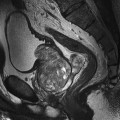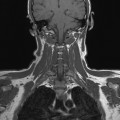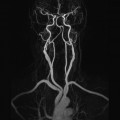6 This section refers to the Patient considerations heading considered for each examination in Part 2. Only a brief overview is provided here. For a more detailed explanation, please refer to Chapter 10 of MRI in Practice or an equivalent text. Any patient motion, whether it is due to fear or discomfort, is likely to degrade the image whatever its SNR and resolution characteristics. When a patient steps into an MRI facility, he or she becomes the responsibility of the unit personnel. This responsibility extends from the patient’s magnetic safety and medical condition, to providing a relaxing environment and a smoothly running facility. It is essential for legal and ethical reasons to ensure that all staff, including radiologists, radiographers, technologists, nurses and clerical and ancillary personnel, are competent and are aware of their role in providing optimum patient care. The main aspect of patient safety in any MRI facility is magnetic safety. It is essential that all patients, relatives and other medical or non-medical personnel are prevented from entering the magnetic field until they have been properly screened. Physical barriers, such as doors and large warning signs, are common ways of achieving this. Clerical personnel (who are usually situated at the entrance to the unit) should be aware of who is present in the facility and whether they have been checked for magnetic safety. Thorough screening of each patient and anyone who is to enter the field is extremely important. Failure to do so may result in injury or even death. All centres should have a proper screening policy which includes checking for: Most facilities provide a screening form that patients, relatives and other persons fill in before entering the magnetic field. This ensures that all important questions have been addressed, and provides a record that screening has taken place. This may be very important if an accident subsequently occurs. Any additional items, such as unremovable jewellery and splints, are thoroughly checked for safety before the patient and their relatives enter the magnetic field. It may be necessary to insulate the item by placing bandages between it and the patient’s skin. If the patient or relative has any unusual prosthesis or implant such as a heart valve, its magnetic safety must be established before they are taken into the magnetic field. The safety of intra-cranial aneurysm clips has been the subject of debate for some years. Ferromagnetic clips must not be scanned. Patients having ferromagnetic clips must not cross the 5 gauss threshold as the clips may be subjected to torque effects and may cause damage to the associated blood vessel. Non-ferrous metals are not deflected by the magnetic field of the scanner; however, utmost caution must be observed when scanning any patients with non-ferrous aneurysm clips as there can be fatal consequences if the type of clip is incorrectly identified. Cardiac pacemakers have long been considered a contraindication for MRI procedures although some manufacturers are now producing devices that may be safe to scan under certain strictly enforced conditions. Non-compatible pacemakers have been responsible for a number of MRI fatalities over the years due to the magnetic field of the scanner compromising the function of the device. Research has also shown torque effects and heating effects in non-compatible devices. For safety’s sake, it is prudent to assume that a pacemaker is non-compatible until proven otherwise, and even if shown to be a conditionally compatible model, advice should always be sought from the manufacturer before attempting any MRI scanning procedure to ensure that the correct conditions are met for a safe outcome. It is usually advisable to ask the patient to change into a gown for their MRI procedure, as this avoids the problem of ferromagnetic items inadvertently entering the magnetic field inside pockets. Ferromagnetic items are strongly attracted to the external magnetic field of the scanner, and there have been many reported injuries and at least one fatality caused by projectiles. Clerical, nursing or radiographic staff usually perform the magnetic screening procedure. However, it is important to remember that whoever screens the patient, ultimate responsibility for projectile safety falls on the person who takes the patient over the 5 gauss threshold. From a historical viewpoint, it is interesting to note that in some unshielded units, the magnetic field sometimes extended beyond the confines of the examination room.
Patient care and safety
Introduction
Patient safety
Stay updated, free articles. Join our Telegram channel

Full access? Get Clinical Tree







